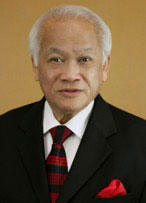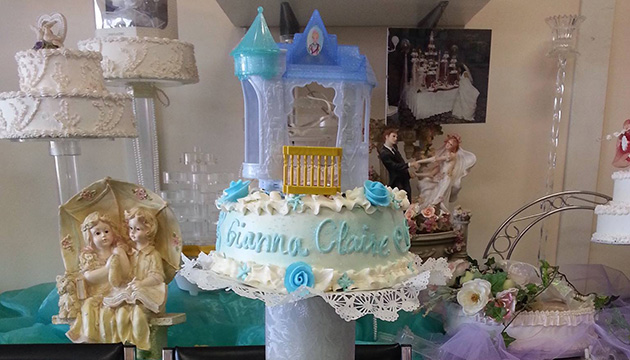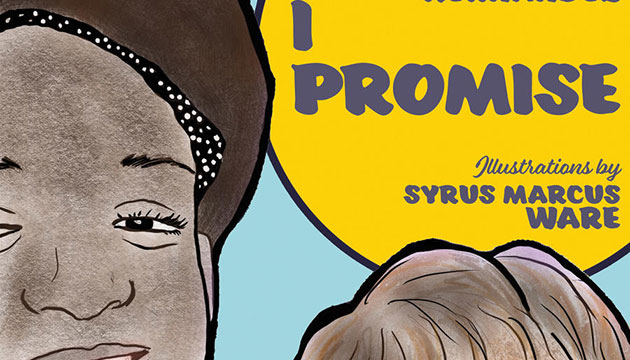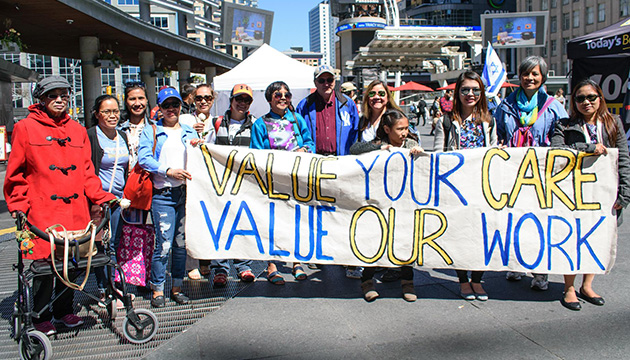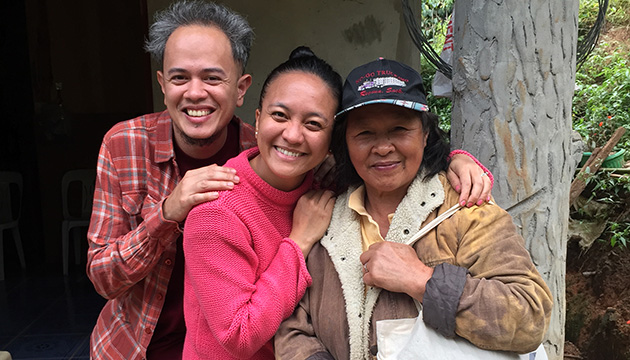[Editor’s Note: Dr. Pagtakhan, a retired lung specialist and professor of pediatrics and child health from the University of Manitoba Faculty of Medicine and former MP and cabinet minister,
has written regularly for Canadian Filipino Net on COVID-19 since WHO declared it a global public health emergency on January 30, 2020 (New Coronavirus Infection) and officially designated the new disease a pandemic that ensuing March 11.
CFNet invited him to share with our readers any lessons he might have distilled as a COVID patient.]
April 1, 2023 - It was a happenstance that I fell ill to COVID-19 almost at its third-year anniversary. How did I become a patient? Why did I let my guard down? Almost to a fault, I have followed public health advisories. I have full trust in the efficacy of face masks. I am fully vaccinated and trust in the ‘amazing power of vaccines. As I recuperate and reflect, are there lessons I remember, could distill from my encounter with the COVID virus, and could now share with readers?
How I became a COVID-19 patient
The COVID-19 virus successfully broke into my body on Thursday evening March 2nd when I joined a large indoor social reception at the Provencher Room in Winnipeg’s historic Fort Garry Hotel. An hour into the arrival of the Guest of Honor, the 300-standing room-capacity was nearly full. While I was wearing my N95 mask, only a handful of the other guests had theirs on. Soon, I was unavoidably exchanging greetings with three guests who had coughs and colds, none of whom donning a face mask.
Worried about a COVID-19 contagion, I excused myself to the washroom, washed my hands and face with soap and warm water, went to the cloak room for my winter jacket, and i-phoned my son, Reis, for a car-ride home.
By morning on March 4th my apprehension had turned real. I had a sore throat, was coughing almost incessantly, had low-grade fever and dull headache, lost my appetite, was drowsy and felt weak. I tested positive with the rapid antigen test.
Unquestionably, I let my guard down. Worse, I also brought the COVID virus home to my wife, Gloria, and our son.
Self-care and monitoring at home
I isolated myself in our basement-turned infirmary for my sole use. Gloria and our son took turns alternately visiting me to ensure I had my symptomatic treatment for fever and cough, my temperature checked, cold compress cloth placed on my forehead and around the sides of the neck when fever was above 38.5 degrees Centigrade. They saw to it my nutrition, hydration and alertness were maintained. When my lips seemed glued to each other upon waking up indicating lack of adequate hydration, I promptly reached for my fluids. I watched, too, that they were not turning blue suggesting oxygen deficiency.
Monitoring for supplemental oxygen
Monitoring my need for supplemental oxygen without an oximeter created a measure of anxiety. I was conscious that even small shifts in the so-called ‘S-shaped’ Oxygen-Hemoglobin Dissociation Curve could mean sudden clinical worsening. Yet, I only had my fingers to check my pulse rate and rhythm, my vintage stethoscope to listen to my heart, and my wrist watch and eyes to ascertain the frequency, depth and regularity of my breathing. As an added metric, I alerted Gloria to watch my nostrils for flaring when I was asleep. Flaring of the alae nasi suggests labored breathing as may come from a developing pneumonia. We reversed roles when she became more ill.
Eligibility for antiviral drug
Our son was able to take the antiviral, Paxlovid, for the first fives days of his symptoms. Gloria and I were ineligible for fear of its untoward interaction with our regularly needed medications.
Reducing the viral load inside the house
Aware that reducing the number of virus particles in the indoor air reduces the risk for persons inside the house to get the disease, I allowed outdoor air – which is free of viral particles – to exchange with the indoor air by opening more often the exhaust and ceiling fans and the screened door and windows. Gloria’ s indoor plants did not welcome the outdoor sub-zero air.
To solve my dilemma, I turned to our HVAC system (central heating, ventilation, and air conditioning system with air ducts that go throughout the home and operationally controlled by a thermostat). Setting the fan to the “ON” position, instead of “AUTO (intermittently),” enables the fan to run continuously even if heating is not on.
Efficacy of face masks and amazing power of vaccines
 Credit: Photo of a bivalent vaccine vial. Copied from the Johns Hopkins Coronavirus Resource Center Newsletter, The Week in COVID-19, March 28, 2023 (l00th and last issue).
Credit: Photo of a bivalent vaccine vial. Copied from the Johns Hopkins Coronavirus Resource Center Newsletter, The Week in COVID-19, March 28, 2023 (l00th and last issue).
The efficacy of face mask in preventing airborne transmission of the virus is based on scientific evidence. It was the mainstay of my physical defence against the viral onslaught for a year prior to development and emergency use authorizations of the Pfizer and Moderna vaccines for mass immunization in December 2020/January 2021.
Our last vaccination dose was on September 20, 2022 – nearly five and a half months prior to us coming down with the disease. While our vaccinations were not able to protect us from the disease – we knew this was not the design nor the claim by scientists and researchers that developed and did the clinical trials on the vaccines – they were able, as designed, to prevent the disease from becoming severe, serious, and life-threatening.
Lessons distilled and now shared
My COVID encounter, together with my wife and our son, enabled us to distill the following lessons which we now share:
- COVID-19 is not yet done. The virus remains a threat even to the vaccinated elderly who remain at high risk. Large indoor gatherings, particularly when wearing of face mask is not practised, pose serious threats to high-risk seniors, even the vaccinated.
- COVID vaccination cannot protect against infection and disease, but prevents the disease from becoming severe, serious and fatal – a strong basis to heed recommended vaccination advisory. My happenstance with COVID, which occurred nearly 6 months after our fourth dose, supports the teaching that waning of protection occurs 6 months after the last dose.
- Household spread appears inevitable. Antigen test kit at home provides assurance of early diagnosis and helps assist home management of patient.
- Self-care and self-monitoring at home – although it appeared we coped well overall – is not without anxiety. Homeowners when faced with similar situation – I pray not – would be well advised to call on their health care provider for a thorough discussion of health care management at home. Availability of an oximeter would help allay anxiety, not to mention help in timely diagnosis of tissue oxygenation deficiency when present.
- Since the antiviral Paxlovid – known to also help prevent severity of the disease – may adversely interact with other medications a patient may be on as happened to my wife and me, best to remember alternative treatment that bypasses the use of Paxlovid, including withholding the other medications for five days, subject to discussion and permission by the doctors who prescribe the underlying medications.
- HVAC fans must be operating for the filters to clean the air. The “ON” continuous position reduces virus particles in the house up to 99% if kept for five hours. In contrast, the “AUTO” or intermittent position reduces the virus load to only 53%. I now maintain the “ON” position more often until we test negative on the repeat antigen test and whenever a guest or staff from home service does a house call.
- Relapse – the return of signs and symptoms – is always an issue of concern to doctors during the recovery of their patients from any infectious disease. While it can result from lack of a good sleep and a healthy diet or from being stressed by the demands of duty to work in a hospital and for family livelihood, a relapse could also result from a room filled with COVID-virus particles causing re-infection. Hence the importance, I reflect, of both government/workplace assistance and adequate room ventilation to prevent relapse


![[Credit: Maxim Shipenkov/EPA-EFE/Shutterstock in The Washington Post, March 16, 2023 showing the graphic image of the COVID-19 virus. The Washington Post has provided this article free to all readers as a public service.]](/images/photos/April2023/virus-covid.jpg)
